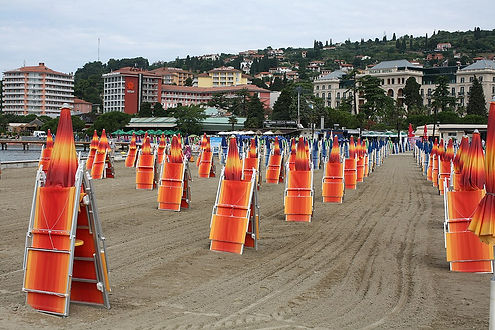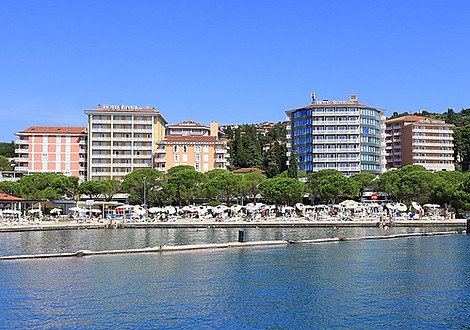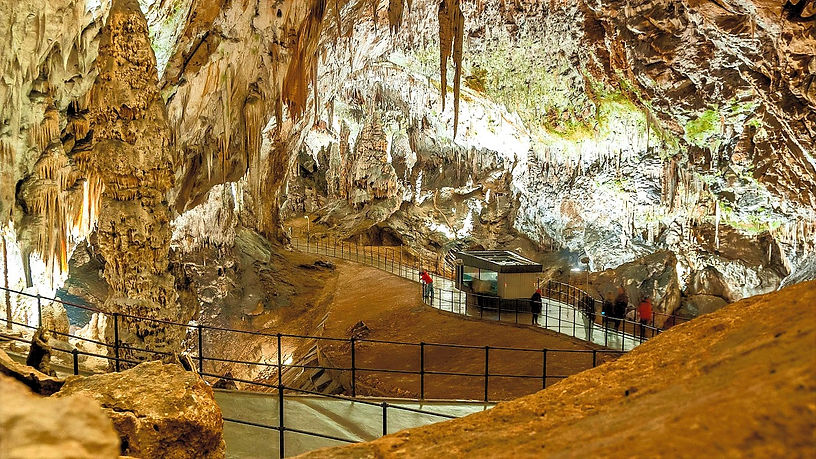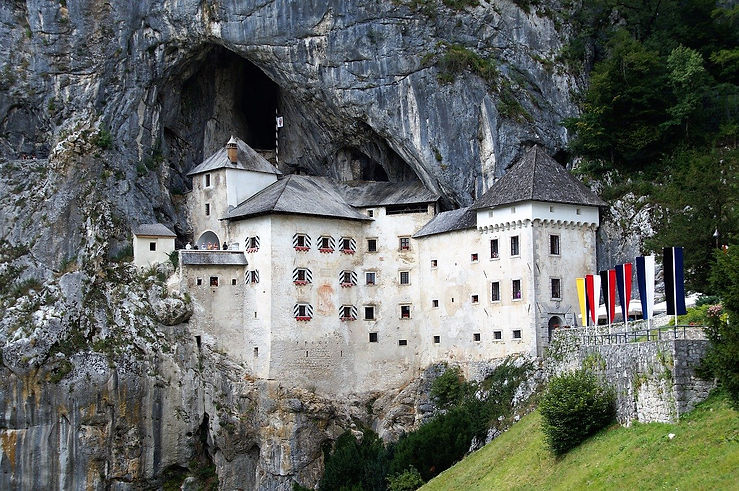

Welcome to

SLOVENIA

Offical Name: Republic of Slovenia
Capital: Ljubljana
Form of Government:
Parliamentary democratic republic
Currency: Euro
Area: 20,273 km²
Populations: 2.1 million
Other cities: Lake Bled, Piran, Maribor, Kranj, Celje, Koper, Velenje, Škofja Loka and Postojna
By Daniela Turcanu - Pixabay
Slovenia is a beautiful country nestled between the high Alps, with glittering glacier lakes, ski resorts, valleys,enchanted forests and caves.
Over half of the country is covered by forests, making Slovenia the third greenest country in Europe with the National Park Triglay being the oldest park in Europe.
The Alps, including the Julian Alps, dominate Northern Slovenia. The alpine regions become immensely popular during winter, as the thick snow creates perfect skiing and winter sport conditions.
Slovenia’s coastline is just over 42 kilometers long, with coastal towns including Koper, Izola, Piran and Portoroz. If you’re looking for a laid-back seaside holiday destination, Slovenia’s Adriatic Coast is one of the perfect place!
Ljubljana
Slovenia’s capital, Ljubljana is a city of beautiful and architecturally interesting bridges. Its river, the Ljubljanica River, flows through Ljubljana Old Town and was once part of a major trade route. Ljubliana is divided into 2 halves by The Triple Bridge (Tromostovje), one side there’s a historical medieval town and on the other it’s the modern vibrant part of the city. Nowadays the river is at the heart of the city's social life, dotted with many bars and restaurants along the canals.
Prešeren Square
Named after France Preseren, Slovenia’s national Poet , and marked by his statue, the square is where the city meets up and celebrate. The Franciscan Church of the Annunciation, with its red façade, is one of the most striking building in the square.
Besides this lavish 17th century Baroque Church, there are many other charming buildings for you to gaze upon, with the magnificent Triple Bridge being another highlight. These three bridges span across the Ljubljanica river and connect Preseren Square to the Old Town.
The middle bridge was built in 1842, The other two smaller bridges were added by Jože Plečnik in 1932, and decorated all three bridges with enormous stone balustrades and lamps, thus created a unique architectural gem of Ljubljana. There are many great pictures opportunity around the square.
Dragon Bridge
Built in 1901, the four fierce-looking dragons that stand on each corner of this bridge seem to be protecting the castle sitting in the background. Dragons are an emblem for Ljubljana and you’ll find them on the city’s coat of arms as well as buildings across the city. A very popular place for photos amongst tourists.
Town Square (Mestni Trg)
Town Square (Mestni Trg) is another major square in Ljubljana, where the 15th century Town Hall is located. In front of the Town Hall is the beautiful Robba Fountain, by the Francesco Robba, and depicts three male figures pouring water from jugs. Not far away, is the Baroque St. Nicolas Cathedral that dominates the square with its splendid dome. It’s an awe-inspiring building replete with art by a number of Italian Baroque masters. Outside the cathedral, you'll find the city Central Market, lines with stalls selling local products. Explore many of its twisting cobbled lanes with colorful medieval buildings, flanked by numerous bars, cafés and restaurants.
Ljubljana Castle
Perched on top of the Castle Hill, Ljubljana Castle has been overlooking Ljubljana for about 900 years. The castle itself was built in the 11th century, but it was being completely rebuilt and redesigned several times. As such, there are lots of different architectural styles on show.
Easily reached by funicular railway , the castle boasts a viewing tower and ramparts with stunning views of Ljubljana and its surroundings. The castle now houses a museum exhibition on Slovenian history, a puppet museum, and a number of historical rooms, such as the Chapel of St George and the dungeon. It is also fascinated to find out that the earliest ever wheel, axle and flute (from about 3200 BC) were found in the marshes near Ljubljana, where people lived in stilted houses. The castle also houses a café and restaurants.
Lake Bled
Slovenia is also famed for its glacial lakes. Lake Bled, surrounded by the breathtakingly dramatic landscapes of the Slovenian Alps , is a nature escape for those searching for peace and fresh mountain air.
Lake Bohinj
Lake Bohinj, the largest natural lake in Slovenia, is another Slovenia’s impressive and beautiful glacial lake. Small charming rustic villages dotted around the lake, creating one of the most picturesque landscape in Europe. Spring is perfect for hiking with gorgeous wild flowers abound in the meadows. In summer, its stunning lake prove to be a good alternative to the seaside. perfect for water activities– from swimming, boat riding, windsurfing, kayaking or canoeing. In autumn, enjoy the romantic shades of falling leaves and in winter, bristling snow-capped mountains overlook a perfectly pristine lake of snow-fed water. The perfect place to relax and unwind on a laid-back vacation.
Piran
Piran, one of the most picturesque coastal cities in Slovenia, surrounded by the tranquil turquoise sea , enjoys the laid-back atmosphere.
For 500 years, Piran was part of the Venetian Republic, and left its mark on the town. There are hints of the Venetians are all over the place.
The Old Town is among the best-preserved anywhere in the Adriatic. Explore by simply getting lost within the labyrinth of cobblestone laneways and charming alleyways with its crowded houses and every corner is a delightful small market square, fountains and sculptures.
Tartini Square
Tartini Square is an elegant Italian-style piazza at the heart of Piran. Named after its most famous local, violinist and composer Giuseppe Tartini, whose statue stands in the square. Flanked by many beautiful magnificent buildings, boasting Venetian influences and all kinds of vibrant pastel colors. The most outstanding is the bright red Gothic-style Benečanka (Venetian House), the only building on the square that retains its original 15th century facade. Other buildings include the yellow Tartini House, a small museum dedicated Giuseppe Tartini and Town Hall.
The Walls of Piran (Obzidje Piran)
The walls were constructed from the 7th century to defend the city against invasion. It is a steep walk up but you will have a fantastic panoramic view of the peninsula, so it’s worth the effort! The most beautiful time to come here would be during sunset, when the sun directly sets behind the horizon of the coastal town.
Piran Waterfront Promenade
Enjoy a stoll along the harbour where colourful fishing boats and private vessels are docked. Look out for the sculptures in the rocks piled up along the promenade. Piran has invited artists to create designs in the limestone rocks. The unique art is definitely something to see in Piran! Follow the path and you’ll see the lighthouse at the top of the peninsula.
St. George’s Parish Church
Located atop a small hill just behind Tartini Square, this 14th-century Venetian Renaissance building dominates the townscape. Its most striking feature is its beautiful bell tower, with 146 steps, you’ll have the best view of the whole town!
Portorož
The spa resort town of Portoroz is located just 4km from Piran. Portorož and Piran are surrounded by salt pans on both sides. The high value of the famed salt enabled the rise of boyh cities in medieval times. Today, Portorož salt makes up a big part of the range of wellness services offered, which is regarded as one of the most comprehensive in Europe.
Portoroz modern development began in the late 19th century with the vogue for the first health resorts. In the early 20th century Portorož became one of the grandest seaside resorts in the Adriatic. The central beach of Portorož has been achieving the best results in terms of the quality of bathing water for many years. The beach is very popular for its volleyball courts, children's playgrounds, water sports park, children's water park, numerous bars as well as relaxation and entertainment.
.jpg)
By Bruno Girin from London-wikimedia.org, CC BY-SA 2.0

By Wistula - wikimedia.org, CC BY-SA 4.0
Postojna Cave
The southwest plateau is full of limestone caves and canyon. There are more than 10,000 caves in Slovenia. The most famous cave is Postojna which stretches as far as 20 km, with countless stalagmite and stalactite formations.
From the magical depths of Postojna Cave make your way to the fairytale world of knights, the Predjama Castle, the World's Largest Cave Castle.
_jpgBy%2520Ivan%2520Iv.jpg)
Postojna Cave
By Ivan Ivankovic from Dubrovnik, - wikimedia.org, CC BY 2.0
Predjama Castle
The mighty Predjama Castle, a Renaissance castle, stood proudly in the middle of a 123-metre-high cliff for more than 800 years. Built within a cave, it is the largest cave castle in the world, located in the village of Predjama, nearby the town of Postojna.
Take a walk through the castle's armoury, chapel, kitchen, torture chamber and discover the magic of medieval life. The castle attic boats a wonderful view of the valley.

Predjama Castle
By ivabalk - Pixabay
Škocjan Caves
One of the largest known underground canyons in the world. An Examples of natural beauty with great aesthetic value. The area has great cultural and historical significance as it has been inhabited since the prehistoric times. The Škocjan Caves have featured on UNESCO’s World Cultural and Natural Heritage List since 1986.
Škocjan Caves
Škofja Loka
Škofja Loka is a small picturesque medieval village with intriguing history and fairytale-like appearance. Its a Slovenian jewel. The red roofs of the dense town, the bell tower of St. Jacob church and the majestic Škofja Loka Castle draw your attention already from afar.
Loka Castle
The original castle was built in 1202. However, it was entirely destroyed by an earthquake in 1511 and Bishop Filip took on its restoration. Today the castle is home to one of the best-arranged museums in Slovenia, with archeological, historical, cultural, artistic, natural science and ethnological collections. Visitors can also see the excellently-preserved 16th century farmhouse, Škopar's House (Škoparjeva hiša) in the castle garden.
Capuchin Bridge
The famous Capuchin Bridge, greets visitors as they cross the Sora river into the old town. Built by monks of nearby monastery.
St. James Parish Church
The Parish Church in Škofja Loka is dedicated to Saint James. It dates to the 15th century.
St. Mary's Column
The shrine was erected in 1751 in the thankfulness that the town was spared from the plague.
Slovenia is absolutely a great place for your next destination.
Your trip to Slovenia may be combine with the neighbouring countries, Croatia, Austria, Italy, Croatia, Hungary or simply Slovenia!
If you’d like to include a tour of Slovenia as part of your next trip to Europe,
contact us now!
Simply drop us an email with your tour request and expect our prompt response for your tailor-made quotation based on your needs and expectations!

















































































